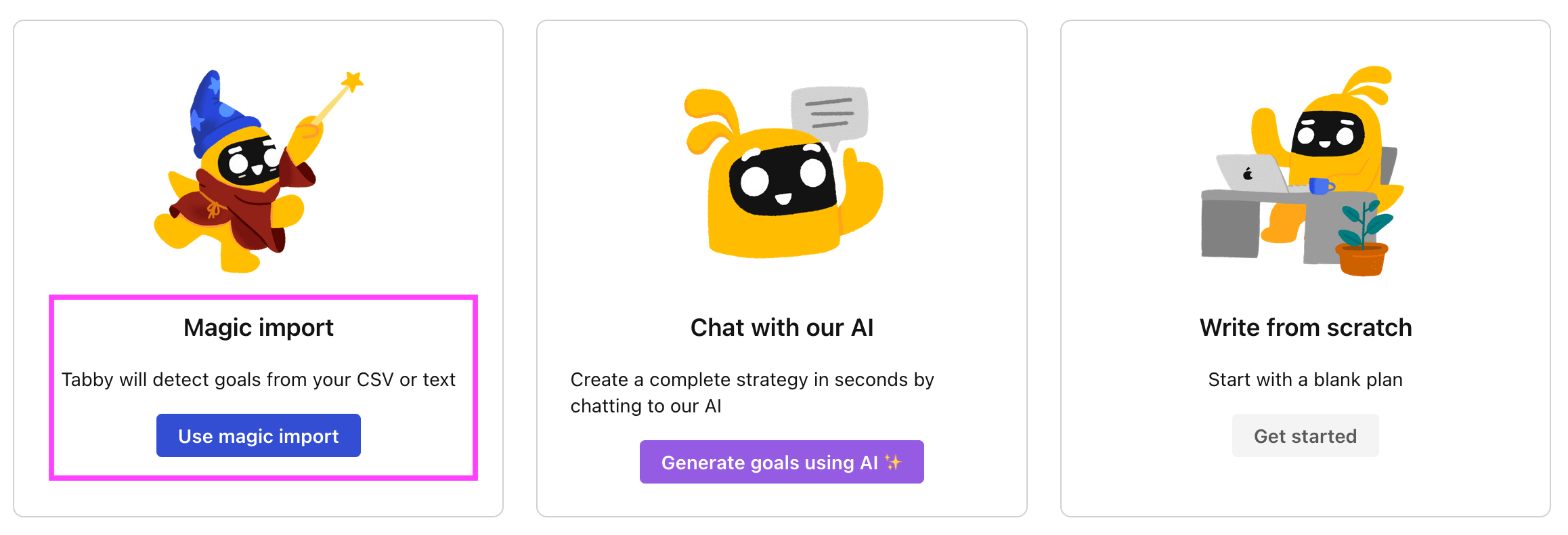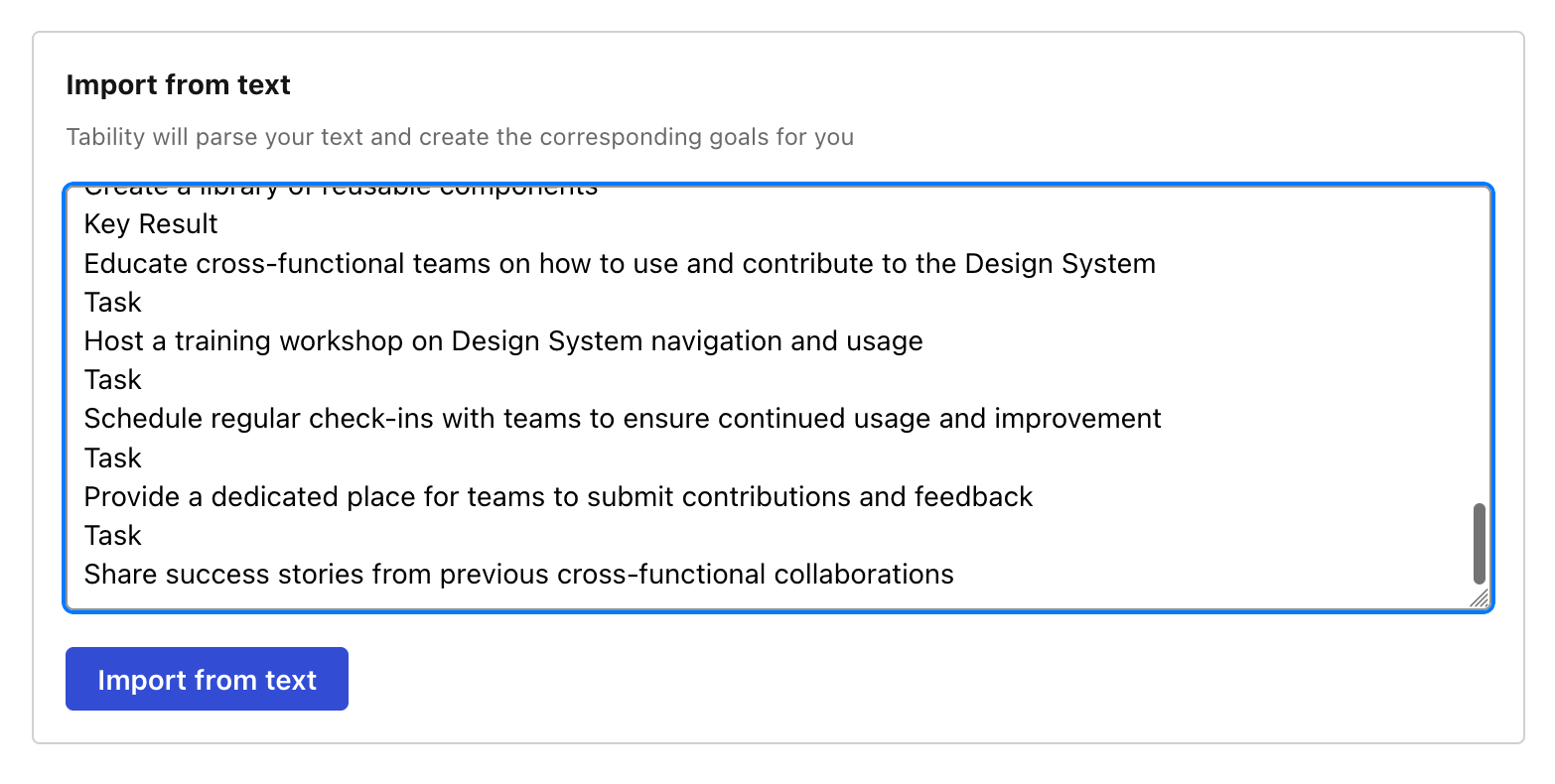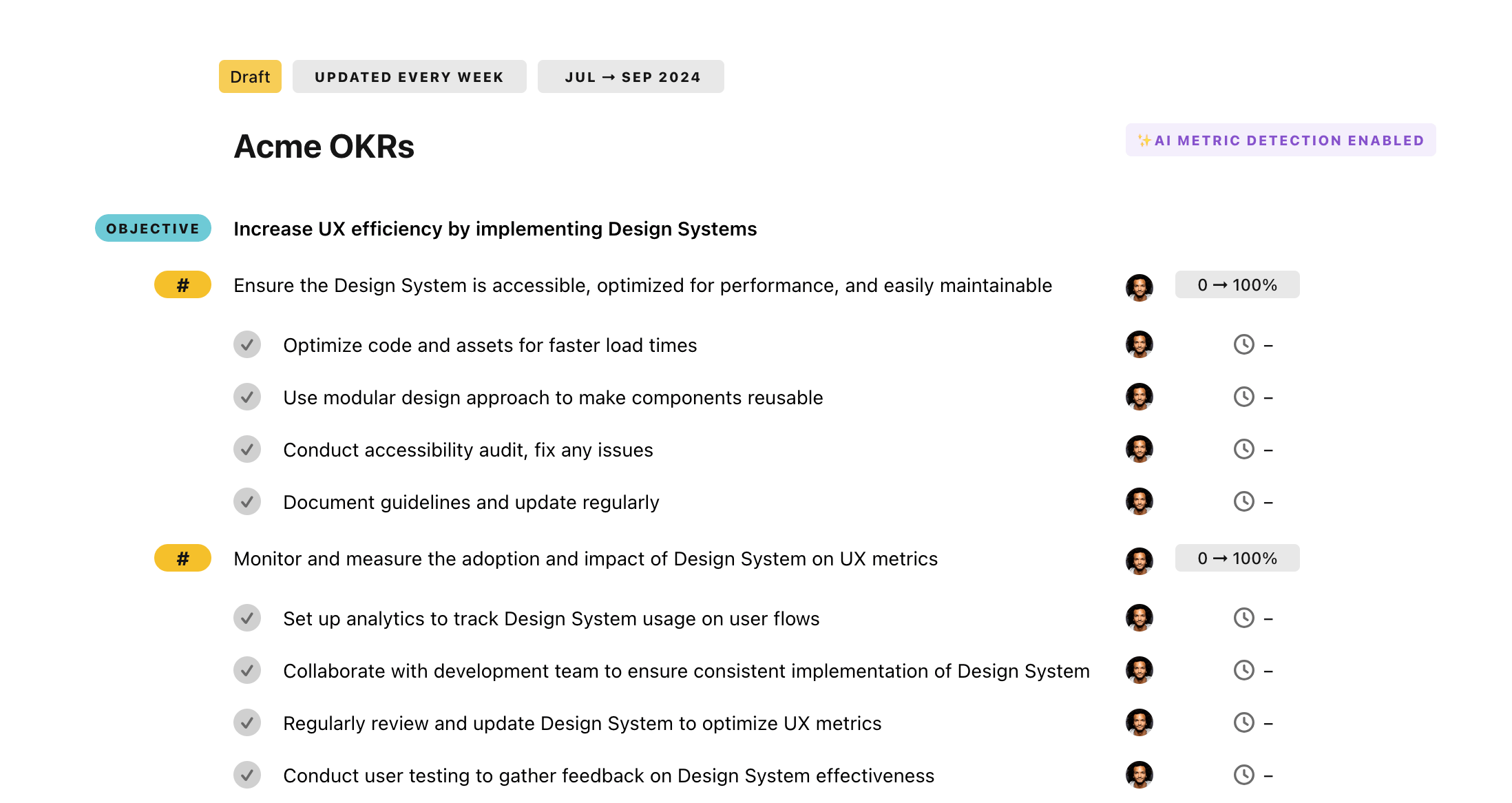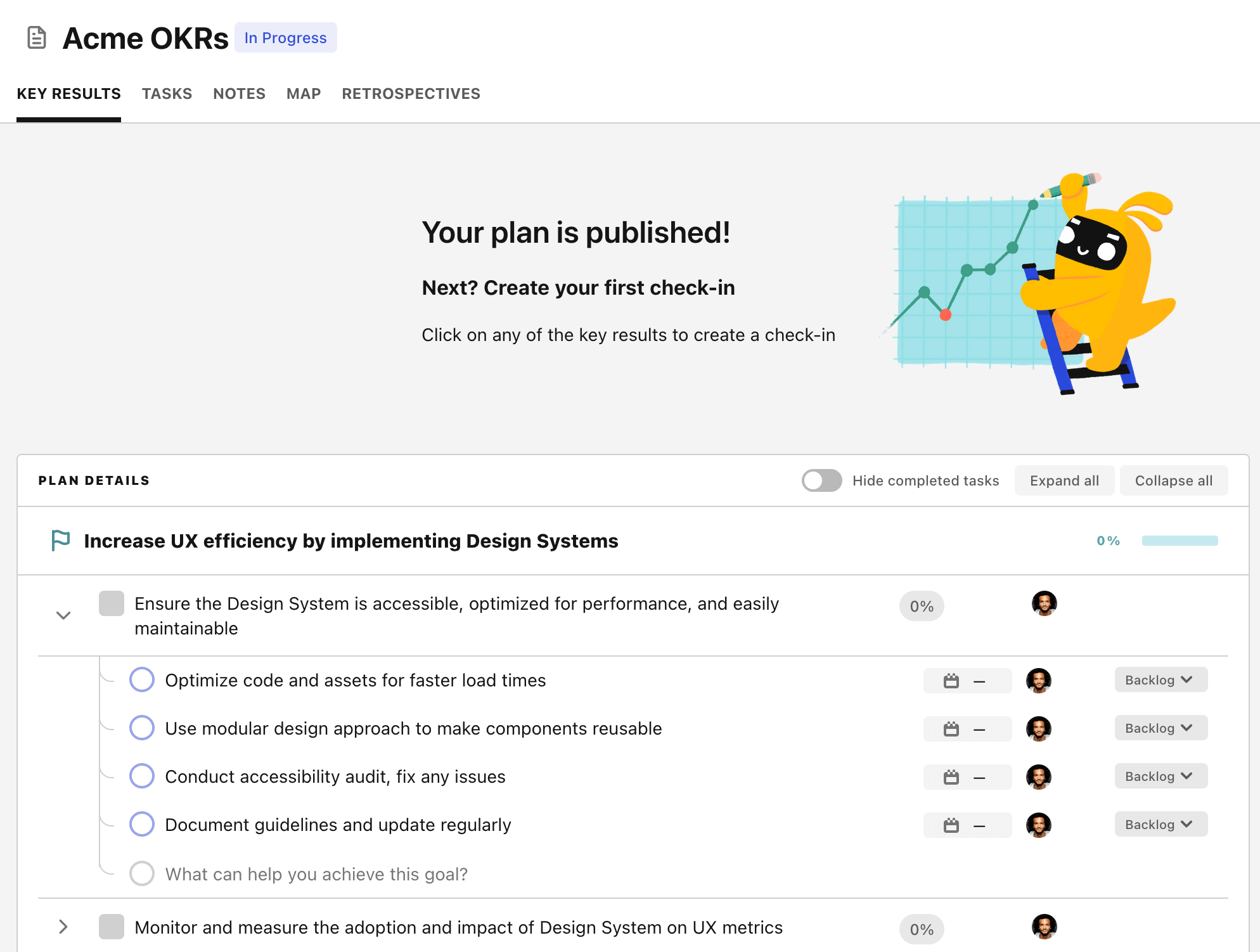OKR template to boost Monthly Membership Subscriptions
Your OKR template
The member referral program aims to result in a 15% increase in new subscriptions. Staff training for promotion and management of the program is one of the core initiatives, alongside the development of the program's structure and incentives. The referral program's performance will be closely monitored against the set goal.
The website UX is another important area that will be addressed. Enhancements include simplifying and streamlining the signup and onboarding process. Testing and optimization techniques such as A/B testing, and user testing will be employed to identify key improvement areas, with a target to increase membership conversion rates by 20%.
The execution of four promotional membership campaigns forms the third strategy. These campaigns will be designed, launched, and monitored for effectiveness, with adjustments made based on performance. The desired outcome is a 25% growth in membership subscriptions as a result of these campaigns.
ObjectiveBoost Monthly Membership Subscriptions
KRImplement member referral program, aiming for 15% new subscriptions
Train staff to promote and manage referral program
Develop structure and incentives for member referral program
Monitor program regularly, aiming for 15% new subscriptions
KREnhance website UX for 20% increase in membership conversion rates
Implement A/B testing for conversion optimization
Simplify signup forms and streamline onboarding
Conduct user testing to identify UX improvement areas
KRExecute 4 promotional membership campaigns to yield 25% growth
Design four different promotional membership campaigns
Adjust strategies based on campaign performances
Launch and monitor the effectiveness of these campaigns
How to edit and track OKRs with Tability
You'll probably want to edit the examples in this post, and Tability is the perfect tool for it.
Tability is an AI-powered platform that helps teams set better goals, monitor execution, and get help to achieve their objectives faster.
With Tability you can:
- Use AI to draft a complete set of OKRs in seconds
- Connect your OKRs and team goals to your project
- Automate reporting with integrations and built-in dashboard
Instead of having to copy the content of the OKR examples in a doc or spreadsheet, you can use Tability’s magic importer to start using any of the examples in this page.
The import process can be done in seconds, allowing you to edit OKRs directly in a platform that knows how to manage and track goals.
Step 1. Sign up for a free Tability account
Go tohttps://tability.app/signup and create your account (it's free!)
Step 2. Create a plan
Follow the steps after your onboarding to create your first plan, you should get to a page that looks like the picture below.

Step 3. Use the magic importer
Click on Use magic import to open up the Magic Import modal.
Now, go back to the OKR examples, and click on Copy on the example that you’d like to use.

Paste the content in the text import section. Don’t worry about the formatting, Tability’s AI will be able to parse it!

Now, just click on Import from text and let the magic happen.

Once your example is in the plan editor, you will be able to:
- Edit the objectives, key results, and tasks
- Click on the target 0 → 100% to set better target
- Use the tips and the AI to refine your goals
Step 4. Publish your plan
Once you’re done editing, you can publish your plan to switch to the goal-tracking mode.

From there you will have access to all the features that will help you and your team save hours with OKR reporting.
- 10+ built-in dashboards to visualise progress on your goals
- Weekly reminders, data connectors, and smart notifications
- 9 views to map OKRs to strategic projects
- Strategy map to align teams at scale